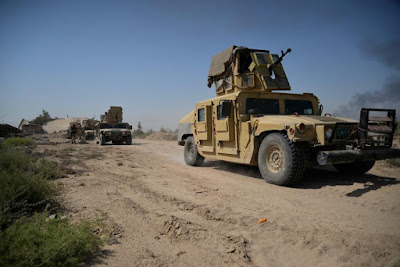Fallujah was the scene of some of the bloodiest urban combat with U.S. forces. In 2004, more than 100 U.S. troops died and another 1,000 were wounded fighting insurgents in house-to-house battles. Once home to more than 250,000 people, only about 60,000 to 100,000 civilians remain in Fallujah, according to the coalition and the United Nations. Many Iraqis are suspicious of the civilians who have not fled, assuming many are IS sympathizers. On Sunday, the Iraqi military repeated calls for civilians to leave, and Davis said leaflets were dropped to warn the population. Those unable to leave were advised to avoid buildings associated with IS and raise a white flag above their homes.
But residents say that because IS controls the main roads, thousands are trapped. The U.N. reported only 80 families have fled in recent days. U.N. Secretary-General Ban Ki-moon said there is "a great risk" to about 50,000 civilians estimated by the U.N. to still be in Fallujah. U.N. spokesman Stephane Dujarric said: "It's important that they have some safe corridors that they could use." IS previously has used civilians as human shields, forcing families to move with the fighters as they retreat from advancing forces and coalition airstrikes. The practice significantly slowed the pace of other operations in Anbar. While the counterterrorism troops are some of Iraq's most competent forces, they still rely heavily on air support to retake territory.
















0 Comments